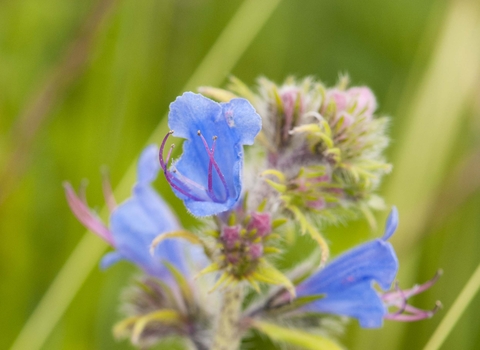©Lizzie Wilberforce

©Katrina Martin/2020VISION
Viper's-bugloss
The upright, blue flower spikes of Viper's-bugloss can be spotted on chalk grassland, sand dunes, cliffs and banks. Its spotted stem is thought to resemble a viper.
Scientific name
Echium vulgareWhen to see
May to SeptemberSpecies information
Category
Statistics
Height: up to 80cmCommon.
